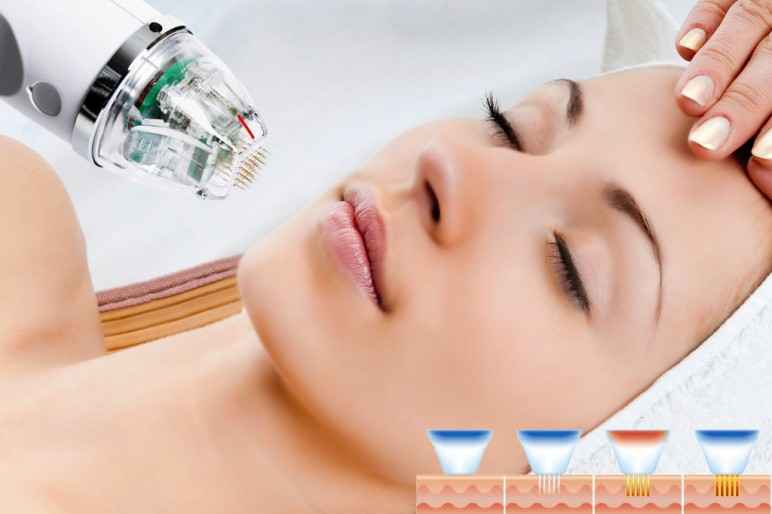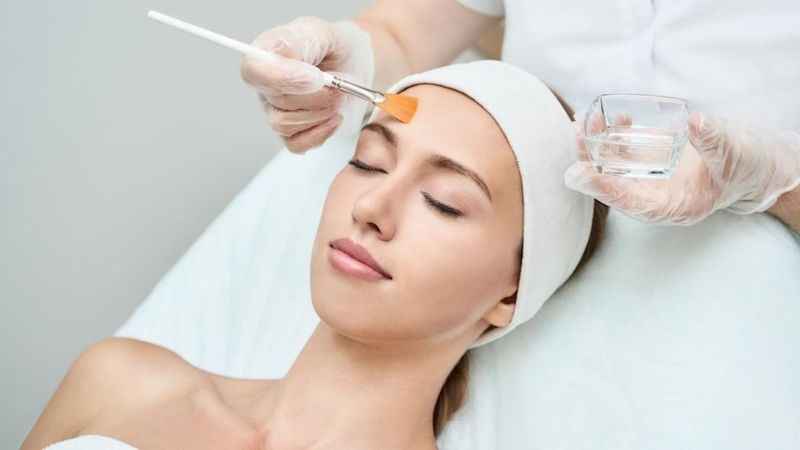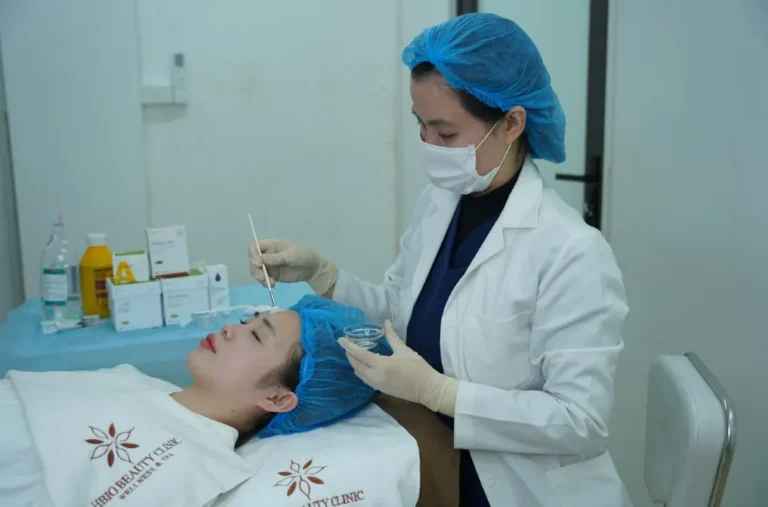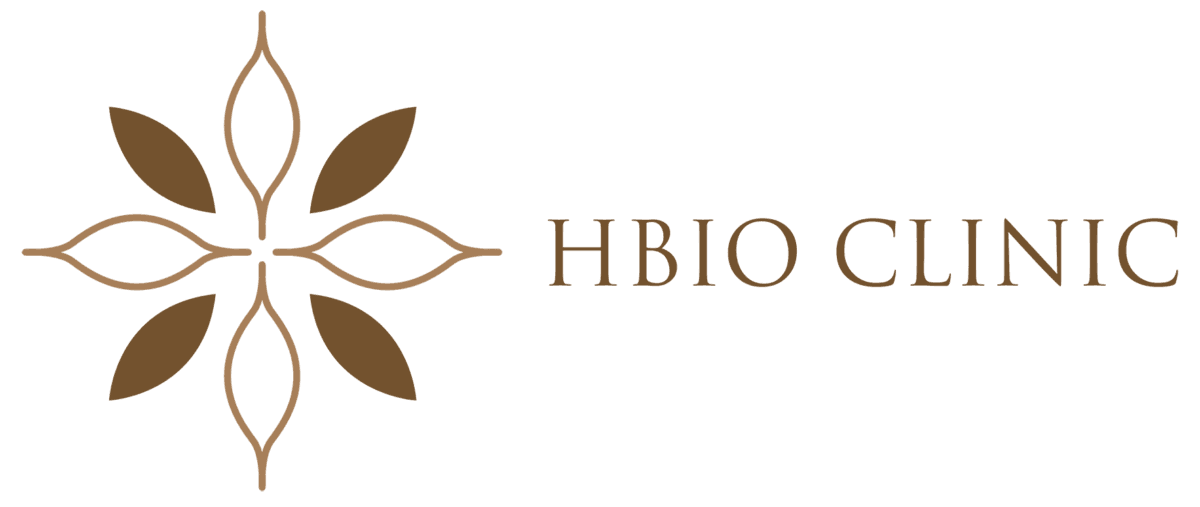In aesthetic dermatology, pitted scars and large pores are two common skin concerns that are often confused due to their similar appearance. Both conditions affect the skin’s surface texture, making it appear rough and uneven. However, differentiating pitted scars and large pores is essential because each has a unique cause and requires a specific treatment approach. Let’s explore how to tell them apart and how HBIO Clinic can help you effectively treat large pores and pitted scars for visibly smoother skin.
What Are Pitted Scars?
Pitted scars are the most common type of acne scars, accounting for 60–70% of post-acne scarring cases. These scars have a V-shaped or funnel-like appearance, very deep and narrow, and often appear in areas previously affected by inflammatory acne or cystic acne. They are the result of severe skin damage during the acne inflammation process, causing collagen in the dermis and subcutaneous layers to break down, which leads to deep indentations that are difficult to heal naturally.

What Are Large Pores?
Large pores are a condition in which the hair follicles on the skin become enlarged and easily visible to the naked eye. This issue is often caused by overactive sebaceous glands, skin aging, buildup of dirt and excess oil, or damage from UV rays.
Although large pores are not a type of scar, they still affect the skin’s appearance, making it more prone to acne, rough texture, and uneven tone.

Accurately differentiating pitted scars and large pores is crucial for selecting the right treatment method, helping to avoid wasting time and treatment costs.
Differentiating Pitted Scars and Large Pores
Below are the key criteria to help you easily distinguish between large pores and pitted scars:
| Criteria | Pitted Scars | Large Pores |
| Appearance | Deep indentations, less than 2mm in diameter, V-shaped or funnel-like, with clear boundaries and pointed base; remain unchanged without treatment. | Round in shape, usually shallower than scars; more visible when skin is oily; commonly found on the T-zone and both cheeks. |
| Cause | Formed due to deep acne inflammation or cystic acne not properly treated, leading to damaged skin structure and collagen loss. | Caused by excess sebum production, aging, sun exposure, genetics, improper skincare, or use of pore-clogging products. |
| Changeability | Do not expand or shrink depending on environment or skincare habits. | May improve or worsen depending on skincare routine, weather, hormones, diet, etc. |
Table: Differentiating Pitted Scars and Large Pores
The more accurately you can differentiate pitted scars and large pores, the more effective the treatment will be.
Treatment Methods for Pitted Scars and Large Pores at HBIO Clinic
Since pitted scars and large pores have different characteristics, they require specialized treatment approaches. Below are the effective protocols currently applied at HBIO Clinic.
Treating Pitted Scars
The goal is to stimulate skin restructuring from within and fill in the depressed scar areas using advanced techniques:
- Fractional CO2 Laser: This method uses fractional ablative laser beams to reach the dermis layer, promoting collagen production and filling in scars from the inside.
- Microneedling RF (Radiofrequency): Combines microneedling with RF energy to penetrate deep into the skin, creating controlled micro-injuries that trigger natural healing and collagen regeneration, visibly improving scarring.
- TCA CROSS: High-concentration trichloroacetic acid is applied directly to the scar to stimulate new tissue formation.
- Punch Excision: The scarred tissue is surgically removed using specialized instruments, typically for deep ice-pick scars. The skin surface is then reconstructed through suturing or skin grafting.
All of these methods work by creating controlled injuries to initiate the skin’s natural healing response. Depending on the severity of the pitted scars, doctors will design personalized treatment plans, often combining multiple techniques for optimal results.

Treating Large Pores
Although large pores and pitted scars differ in origin, they can sometimes be treated in combination—especially with modern technologies:
- Microneedling – RF Microneedling: Helps tighten pores, control excess oil, and improve skin smoothness and structure.
- Chemical Peels: Remove dead skin cells, deeply cleanse the pores, regulate sebum production, and support pore minimization.
- Meso Botox Injections: Low-dose Botox is injected into areas with enlarged pores to control oil secretion and refine skin texture.
- Electroporation (Skin Infusion): Uses mild electric currents to deliver active ingredients like hyaluronic acid and vitamin C deep into the skin, enhancing hydration and improving skin structure.
Additionally, home skincare plays an essential role. You should cleanse properly, moisturize regularly, exfoliate periodically, and always apply sunscreen diligently.

Notes When Treating Ice Pick Scars and Large Pores
Some important precautions to keep in mind when treating ice pick scars and enlarged pores:
- Do not self-treat at home with unverified or unclear products.
- Avoid improper pimple popping, which can worsen skin damage.
- Always consult a dermatologist or skin specialist for the appropriate treatment plan.
- Maintain a healthy diet and balanced lifestyle to support the skin’s healing process.
HBIO Clinic – Trusted Address for Treating Ice Pick Scars and Large Pores
HBIO Clinic takes pride in being a specialized center for the treatment of ice pick scars and enlarged pores. With a team of experienced dermatologists and the application of advanced technologies such as CO2 Fractional Laser, Microneedling RF, meso botox, and nutrient infusion therapy, we are committed to providing personalized treatment plans tailored to each skin type and scar condition. Our goal is to help clients regain smooth, confident skin.

In conclusion, while ice pick scars and enlarged pores can be aesthetically concerning, they can be effectively treated with accurate diagnosis and proper care. Let HBIO Clinic accompany you on the journey to healthy, radiant skin.


 Tiếng Việt
Tiếng Việt
Dr. Thai Nguyen – Founder and Medical Director of HBIO Clinic. As an expert in aesthetic dermatology, she regularly shares in-depth knowledge and practical experience to provide valuable and insightful information for those seeking better skin health.